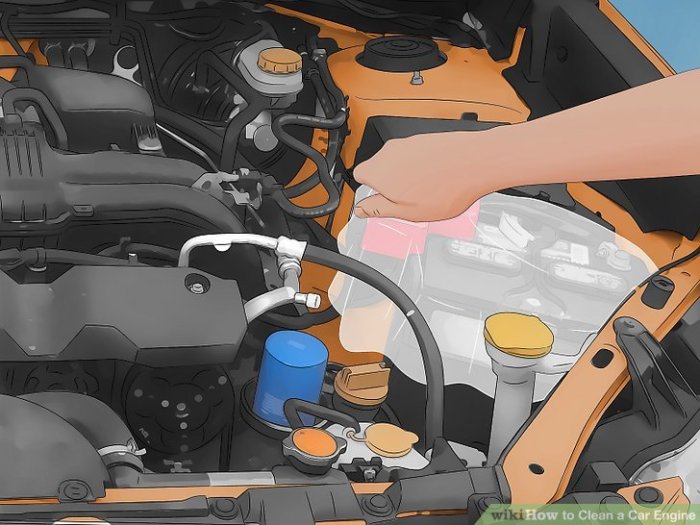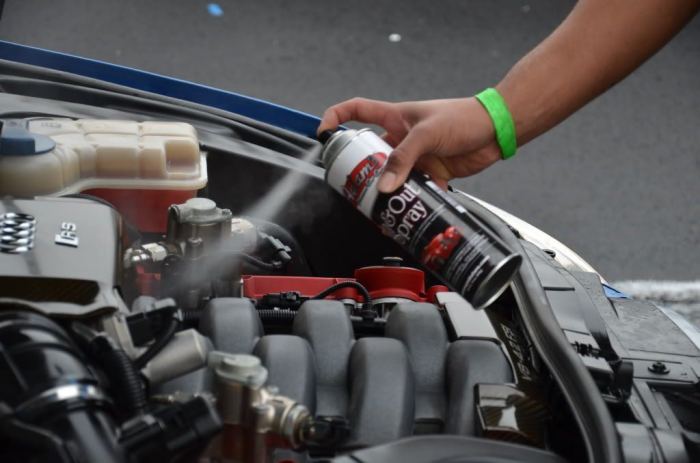How to clean your car engine is more than just a chore; it’s a vital maintenance task that can enhance your vehicle’s performance and longevity. A clean engine not only looks good but also functions better, reducing wear and tear caused by dirt and grime buildup. In this guide, we will explore the essential steps, tools, and techniques needed to keep your engine in pristine condition, ensuring it runs smoothly for miles to come.
You also will receive the benefits of visiting Mazda sports car tuning guide today.
From understanding the importance of engine cleanliness to learning about eco-friendly cleaning alternatives, this comprehensive overview will equip you with the knowledge necessary for effective engine maintenance. Get ready to dive into a world where cleanliness meets functionality, transforming your vehicle into a well-oiled machine.
Get the entire information you require about Most affordable electric vehicles on this page.
Importance of Cleaning Your Car Engine: How To Clean Your Car Engine

Maintaining a clean engine is essential for the overall health and performance of your vehicle. A clean engine not only enhances the aesthetics of your car but also plays a crucial role in its functionality. Neglecting engine cleanliness can lead to a multitude of issues that impact performance and efficiency.
Dirt and grime accumulation can cause overheating, reduced fuel efficiency, and even engine failure. When debris obstructs airflow or clogs essential components, it can lead to serious mechanical problems. Conversely, a clean engine runs cooler, reduces wear and tear, and improves gas mileage, contributing to better overall performance.
Tools and Materials Needed
Before embarking on the cleaning process, it’s important to gather the necessary tools and materials. Having the right equipment will streamline the cleaning and ensure effective results.
Essential tools include:
- Soft-bristle brushes for scrubbing
- Microfiber towels for drying
- Plastic or metal scrapers for removing tough grime
- Pressure washer or garden hose with a spray nozzle
Cleaning agents suitable for engine cleaning:
- Degreasers specifically formulated for automotive use
- All-purpose cleaners that are safe for engines
- Protective sprays for finishing touches
Safety gear is also a must:
- Gloves to protect your hands from chemicals
- Safety goggles to shield your eyes from debris and cleaners
- Old clothes or coveralls to protect your skin and clothing
Preparation Steps Before Cleaning

Proper preparation is vital for a successful engine cleaning. Follow these steps to ensure a safe and efficient cleaning process.
Create a checklist before starting:
- Gather all necessary tools and materials.
- Ensure the car is parked in a well-ventilated area.
- Allow the engine to cool completely to avoid burns.
Cover sensitive components:
- Use plastic bags or cling film to wrap electrical connections, air intakes, and other vulnerable parts.
- Secure the coverings with tape to prevent water ingress.
Disconnect the battery safely:
- Start by removing the negative terminal first to prevent electrical shocks.
- Ensure no tools or debris are left near the battery before proceeding.
Step-by-Step Cleaning Process
The following steps Artikel a comprehensive engine cleaning process.
1. Remove Loose Dirt and Debris: Use a soft-bristle brush and a vacuum cleaner to remove larger chunks of dirt.
2. Apply Degreaser: Spray the degreaser generously on the engine surface. Allow it to sit for a few minutes to break down grime.
3. Scrub the Engine: Use various brushes to scrub every visible area, focusing on stubborn spots.
4. Rinse: Gently rinse the engine with a pressure washer or garden hose, being cautious with sensitive components.
5. Dry: Use microfiber towels to wipe down the engine, ensuring all moisture is removed.
6. Reassemble: Remove any coverings and reconnect the battery once everything is dry.
Specific Cleaning Techniques
Different engine types may require customized cleaning approaches.
Gasoline vs. Diesel Engines:
- Gasoline engines typically accumulate less sludge but require careful handling due to electrical components.
- Diesel engines can have heavier buildup; using a stronger degreaser may be necessary.
Utilizing Pressure Washers:
- Pressure washers can effectively remove stubborn grime, but proper distance and angle are crucial to avoid damage.
- Use lower pressure settings to protect sensitive components while ensuring thorough cleaning.
Cleaning Hard-to-Reach Areas:
- Utilize long brushes or attachments to reach areas like behind the engine and around the oil filter.
- Consider using compressed air to blow out debris from tight spots.
Post-Cleaning Maintenance, How to clean your car engine
After cleaning, implement these practices to maintain engine cleanliness and longevity.
Steps for post-cleaning:
- Inspect for leaks or damage after cleaning.
- Apply a protective spray to prevent future grime buildup.
Regular maintenance practices:
- Schedule engine cleaning every 6 to 12 months based on driving conditions.
- Keep the engine bay free from debris by performing quick clean-ups regularly.
Creating a cleaning schedule ensures consistency and helps catch potential issues early.
Environmental Considerations
Cleaning your engine should also involve environmentally responsible practices.
Safe disposal of cleaning chemicals:
- Follow local regulations for disposing of used chemicals and materials.
- Use designated recycling centers for hazardous waste.
Eco-friendly alternatives:
- Consider using biodegradable cleaning products to reduce environmental impact.
- Explore natural degreasers like vinegar and baking soda for light cleaning.
Minimizing waste:
- Use a spray bottle to control the amount of cleaning agent used.
- Collect runoff water and reuse it for other cleaning tasks where appropriate.
Common Mistakes to Avoid

Understanding common pitfalls in engine cleaning can save time and prevent damage.
Frequent errors include:
- Neglecting to cover sensitive components, leading to water damage.
- Using harsh chemicals that can corrode engine parts.
Consequences of incorrect cleaning methods:
- Improper rinsing can lead to electrical failures.
- Using high pressure can dislodge connections and damage components.
Tips for safe cleaning:
- Always follow manufacturer guidelines for cleaning products.
- Test cleaning agents on a small area first to ensure compatibility.
Ending Remarks
In conclusion, maintaining a clean car engine is crucial for optimal performance and longevity. By following the Artikeld steps and utilizing the right techniques and tools, you can avoid common pitfalls and keep your engine running efficiently. Regular cleaning not only enhances the aesthetic appeal of your vehicle but also contributes to its overall health and reliability, ensuring a smooth ride for years to come. Remember, a clean engine is a happy engine!